Our Capabilities and Applications
|
Economic Geology:
|
- Ore and strategic mineral analysis – The JXA-8200 is used routinely for the chemical analysis of oxides, sulfides, silicates, PGEs, phosphates, halides, and REE-bearing minerals for exploration of economic mineral deposits.Ìý We have worked closely with both prospectors, mining companies and industrial mineral processors to develop both local and international ore deposits.
|
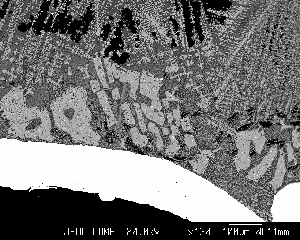 |
- Provenance verification – Researchers have use the JXA-8200 for the tracing of provenance of minerals based on compositional, microstructural and crystallographic variations (e.g., using trace-element variations in anatase, brookite and rutile from Nova Scotia’s offshore, partially funded by PenGrowth).Ìý Such provenance studies aid in deciphering geological transport mechanisms and locating the location of origin of strategic minerals.
|
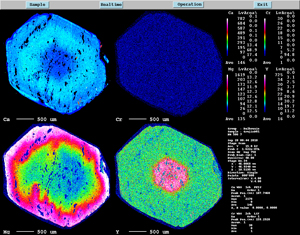 |
Geology:
|
- Petrographic analysis – Researchers commonly use the microprobe for routine petrography, owing to the high resolution of the imaging systems and the ability of the EDS system to aid in the quick identification of mineral phases.Ìý The use of high magnifications that exceed those of an optical microscope allow for determination of sub-microscopic phases, especially useful when determining trace-mineral abundances and compositions.Ìý The ability to resolve grains at the micron-scale makes accurate identification possible that can’t be achieved by white-light microscopy.
|
 |
- Monazite dating –Ìý Researchers interested in chemical analysis of U, Th and Pb in monazites for age-dating tectonic events commonly use the microprobe for both its ability to analyze trace elements and to compositionally map zonation in monazites.Ìý The method of analysing different compositional zones allows researchers to correlate zones of different ages with individual tectonic events which may have been otherwise masked or obliterated from the structural fabrics of a given suite of rocks.
|
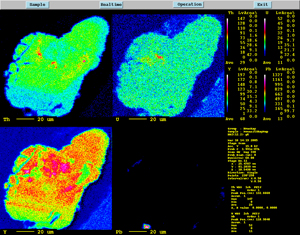 |
- Geothermobarometry – The JXA-8200 has been used extensively in the estimation of temperature and pressure regimes under which geological events have occurred, by analysing garnet compositions and applying the resultant analytical data to computer modelling of tectonic events.Ìý Compositional maps and textural information coupled with linear-traverse, quantitative WDS analyses allow researchers to extract a geological history of the garnets, which in turn allows researchers to interpret more broadly the geological context of the host rocks in which the garnets reside.
|
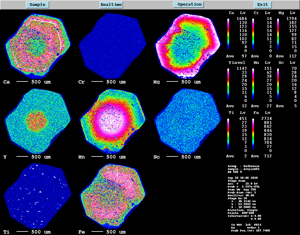 |
- Chemostratigraphy – The microprobe is also used in the analysis of trace elements within and across sedimentological strata in order to map both the mineralogical and cryptic, chemical variations that come with changes in depositional regimes over time, throughout the geologic record.Ìý For example, quantitative analysis of SEDEX-type, black-shale-hosted sulfide deposits can be analyzed to show at what depth and in which corresponding depositional regime did anoxic conditions prevail over oxygen-rich ones; this type of information can be used to map out local and global, mass-extinction events in paleo-oceanic environments (e.g., Frasnian-Fammenian mass-extinction event recorded in strata in the northern Yukon Territory in the Richardson Foothills (Goodfellow, W.D. et al., 1988, Paleontology, Paleoecology and Biostratigraphy, Memoir 14 3: 9-21; Meyer, K.M. et al., 2008 Ann. Rev. E. Pl. Sci. 36: 25-288; Bond, D. et al., 2004, Geol. Mag. 2 : 173-193). The probe has also been used to map the growth of Fe-sulfide framboids in black shales to explore the relationship between framboid sizes and prevalent redox conditions during their formation, which in turn may correlate to mass-extinction events as well as be possible indicators of formation of certain types of economic sulfide deposits.
|
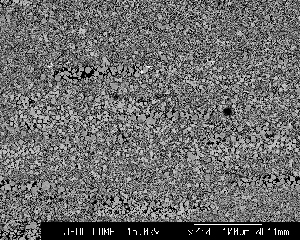 |
Biology:
|
- ÌýBiology –Ìý The microprobe is not limited simply to the analysis of geological or engineered materials.Ìý Researchers at »ÆÉ«Ö±²¥ have used the microprobe in the chemical characterisation of skeletal structures within new, marine micro-organisms that incorporate both silica and carbonate minerals in their tests.Ìý The JXA-8200 is fully capable of analysing even small concentrations of non-organic materials within properly prepared organic tissues.
|
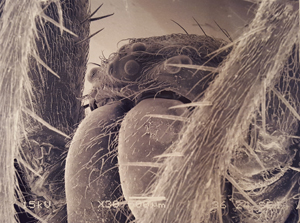 |
- ÌýEcology – Researchers have used the JXA-8200 for assessing herd health and migration patterns of moose by chemically analysing teeth shed or recovered in the moose’s natural habitat.Ìý Such studies can be used to model the interactions of wildlife with their environments.
|
Ìý |
Industrial:
|
- Industrial alloy analysis – Our lab participates routinely in quality assurance analysis of the composition of oil pipes used in the development of commercial oil fields, structural steels used in the construction of oil rigs and sailing vessels, airfoil and airframe alloys used in commercially produced aircraft, as well as other materials that are used in everyday life.
|
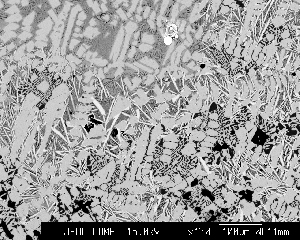 |
- Industrial process quality assurance – We perform non-destructive analysis of raw materials, through to finished products, e.g., chemical and textural analysis of steels, welding materials and welded joints, verification of compositions of Li-ion power sources.Ìý Whereas the microprobe analyzes only a few cubic microns at one time, it is generally non-destructive, and this permits us to analyse small, whole objects in the analysis chamber, without the need to deconstruct them, first.
|
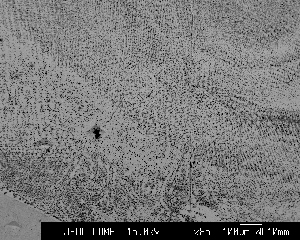 |
Environmental:
|
- Environmental geochemistry – Researchers are able to examine and trace the fate of chemical pollutants in the environment, and to devise ways to better remove such pollutants (e.g., by the analysis of heavy metals in sediments that accumulate at river mouths and in harbours).
|
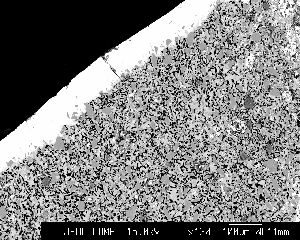 |
- Biogeochemical studies – Chemical analysis of media used to trap environmental pollutants is an off-shoot of research into the geochemical fate of heavy metals.Ìý The microprobe makes possible the analysis of plant materials used in the process of bioremediation, thereby aiding in the choice of which types of plants are most efficient at removing pollution from contaminated soils at waterways.
|
 |
Medical and Pharmaceutical:
|
- Biomedical engineering – Biomedical engineers have long been using synthetic materials used to augment human physiology, e.g., bio-active glasses and coatings used in Ti-alloy replacement parts such as in dental reconstruction or in joint replacements.Ìý The microprobe is useful in both analysing such materials and their homogeneity, as well as providing engineers with valuable information regarding how well such synthetic materials are assimilated or rejected by human tissue.
|
Ìý |
- Medicine – »ÆÉ«Ö±²¥ researchers have used the JXA-8200 for the analysis of human hair and follicles to assess the degree of accumulation and toxicity of oncological treatment agents.Ìý Such information is used by researchers to improve cancer treatments such that anti-cancer agents can be made more target-specific, leaving healthy cells unaffected and improving patients’ responses to new therapies and increasing tolerances of undesirable side-effects of chemotherapy.
|
Ìý |
- Pharmaceutical Production – Our lab has collaborated with the manufacturers of novel pharmaceutical compounds and delivery vehicles, primarily by using the microprobe’s unique capability of mapping compositional characteristics of such compounds.Ìý Such X-ray compositional maps can help pharmaceutical researchers assess such parameters as integrity of enteric coatings, or the efficacy of micro-encapsulation agents used in delivering medications.
|
Ìý |
Safety
|
- Safety inspection of buildings and homes – The JXA-8200 has been used to assess the safety of building materials in both antique or designated ‘heritage homes’, as well as in relatively modern structures such as the Life Sciences Centre here at »ÆÉ«Ö±²¥.Ìý The microprobe is uniquely suited to the non-destructive testing of both pigments in paint and ceramics, to assess potential toxicity owing to the presence of Pb-bearing species.Ìý Also, the microprobe allows for the determination of asbestos in insulating materials associated with both wall- and roof-insulation as well as for asbestos used in plumbing and heating materials.
|
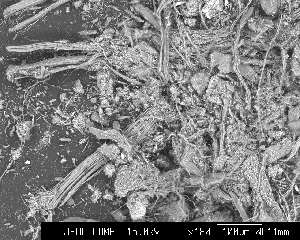 |
- Structural and failure analysis on the microscopic scale – Owing to the ability of the microprobe to acquire and analyse images on the basis of composition, we are able to shed light on the failure mechanisms of engineered materials, e.g., analysing corrosion products along failure surfaces of boiler tubes in electrical generation plants; aiding in automobile accident reconstruction by examining failure modes of metal parts.
|
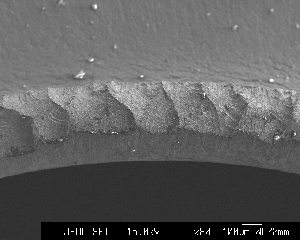 |

























